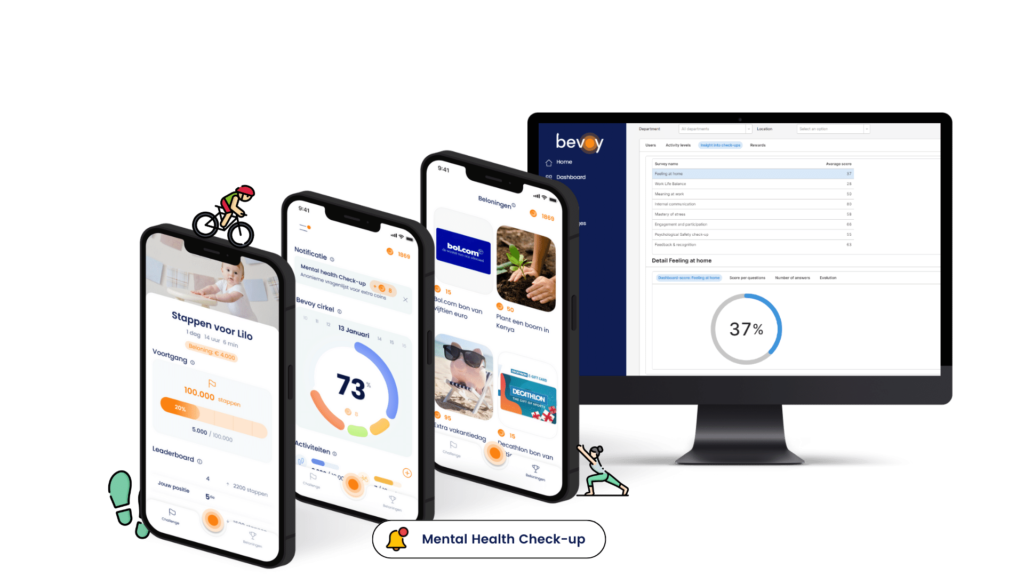Three key insights: Toxic behavior in the workplace
- Toxic behavior in the workplace is often difficult to recognize and may occur unconsciously; it is important to distinguish it from natural friction and teasing that occurs when working together.
- Addressing toxic behavior begins with recognizing its presence, formulating a desired corporate culture and actively working to change behavior.
- Psychological safety and an open communication culture are crucial to discuss and address toxic behavior; invest in feedback training and involve relevant stakeholders.
Failure to do so will have disastrous consequences for corporate culture. The challenge is that many people do not even realize they are in a toxic work environment. Time to change that!
Elke Van Hoof is an academic, entrepreneur and innovator with one goal in mind: to teach as many people as possible how to be the best version of themselves, regardless of context. So too in the workplace. Work plays an important role in many people’s lives. So we asked Van Hoof how to recognize and address toxic behavior in the workplace.
What is toxic behavior?
“Toxic behavior is a heavy word of course,” Van Hoof begins. “It’s basically bullying. Something we often get from childhood. It’s no stranger to me either. I was born with striking blonde-white hair and I was in class with all people with brown hair. If you stand out, you are automatically the odd duck and teasing soon ensues.”
Teasing is often seen as harmless. “But,” says Van Hoof, “constant teasing is also bullying behavior. Because you filter someone out of the group and thereby create a very destructive group atmosphere.”
Toxic behaviors can thus develop quickly without being immediately recognized. Van Hoof believes that companies should work to ensure that people who oppose each other should not become enemies. One specific form that Van Hoof has trouble with is so-called gaslighting.
Van Hoof: “Actually, that is psychological warfare. That’s communicating with the other party in such a way that you give them the feeling that they are losing their minds. For example, by saying: don’t you think this is going to hurt your career if we can’t get along here? This is something that is much more common in the workplace than we think.”
Why do people exhibit toxic behavior?
“If you put people in one space, there will be tensions,” Van Hoof replied. “So it’s important that we separate toxic behavior from natural frictions that occur when people try to work together. Teasing to tick each other off, to create a bond, that’s completely harmless and necessary to work together. But really picking someone out on a particular characteristic and keeping repeating it, that’s when it becomes toxic.”
So the line is pretty thin. “Many forms of toxic behavior are hard to recognize and happen unconsciously,” Van Hoof explains. “Think of whispering in the corridors. In the meeting people react positively to your idea, but in the corridors they crack down on your idea and no one takes you seriously. Without you knowing it.”
Here, many companies fall into the trap of rewarding positive behavior and ignoring negative behavior. But in this case, that is a dangerous attitude. So it starts with an open attitude of wanting to (re)acknowledge and address transgressive behavior.
So what should you as an organization pay attention to and work toward? Van Hoof: “You have to work toward a culture where you name what needs to be named, around the table. And for many people, that’s particularly exciting. That makes it difficult to give honest feedback and communicate openly with each other.”
This is how you tackle toxic behavior
For starters, you have to remember that toxic culture is unconsciously created, according to Van Hoof. “No manager thought: my goal for this year is to create a toxic work environment.”
“Step one is to recognize as a company or as management that toxicity is present in your workplace. Then you determine: what do we want?” continued Van Hoof. “You want to get rid of the negative behavior and you want to start rewarding the positive, the one you want to work toward with each other.”
Formulating a mission and vision is not enough, Van Hoof believes. “Also, give those mission and vision hands and feet. What behavior does someone who carries out your mission exhibit? What words does that person use? What kind of person is he or she?”
The next step revolves around evaluation and performance. “You’re going to hire people on it, you’re going to judge people on it, you’re going to use training within onboarding for it. So you want to formulate the mission and vision, make sure people are going to carry it and make sure that it stays alive. Just remember that this is a long-term issue,” says Van Hoof.
Here's what to look for when addressing toxic behavior
Van Hoof emphasizes that you can’t address toxic behavior with one workshop; it really has to be part of the way you work. And in doing so, you must meet important conditions. “A very important aspect is psychological safety. In addition to your policy, culture and feedback training, you have to provide safety. You do that, for example, with confidants.”
“If people feel psychologically safe to name things, I think you can accomplish a lot as an organization without outside help,” Van Hoof continued. “By investing in feedback training and creating challenges in it for employees to make it their own. The problem is often that a vision is written down, but it never starts to live. So make sure it really becomes a living organism.”
What you can do when dealing with toxic behavior
So whether you do it yourself as an organization or whether you bring in outside experts, the most important thing is to make sure that it goes beyond the paperwork and that it actually lives within the organization.
It is important to focus on several aspects to ensure this. Van Hoof: “Using the culture of the company, the stakeholders that matter within the company, but also determining what you yourself want to achieve in this situation.”
“So when faced with toxic behavior,” Van Hoof continued. ” Then first ask yourself what exactly is happening and what impact it is having on you as a person. Next, ask yourself what exactly you want to achieve. Then you can think about what your employer needs to help you achieve that goal and remove certain barriers. Finally, you determine who needs to know that.”
This is the way to make toxic behavior negotiable. Combine that with an organization that is willing to (re)recognize and address toxic behavior by specifically addressing it and you are on your way to a positive, safe and efficient corporate culture.




